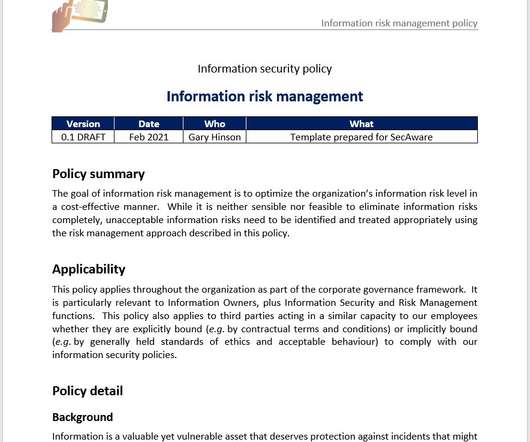12 Data Loss Prevention Best Practices (+ Real Success Stories)
eSecurity Planet
APRIL 12, 2024
Use cybersecurity training tools , seminars, online courses, and simulations to successfully engage staff and reinforce fundamental network security principles. Employ Authentication Methods for All Users & Devices A zero trust approach rejects any sort of inherent trust and requires continual verification of all users and devices.












Let's personalize your content